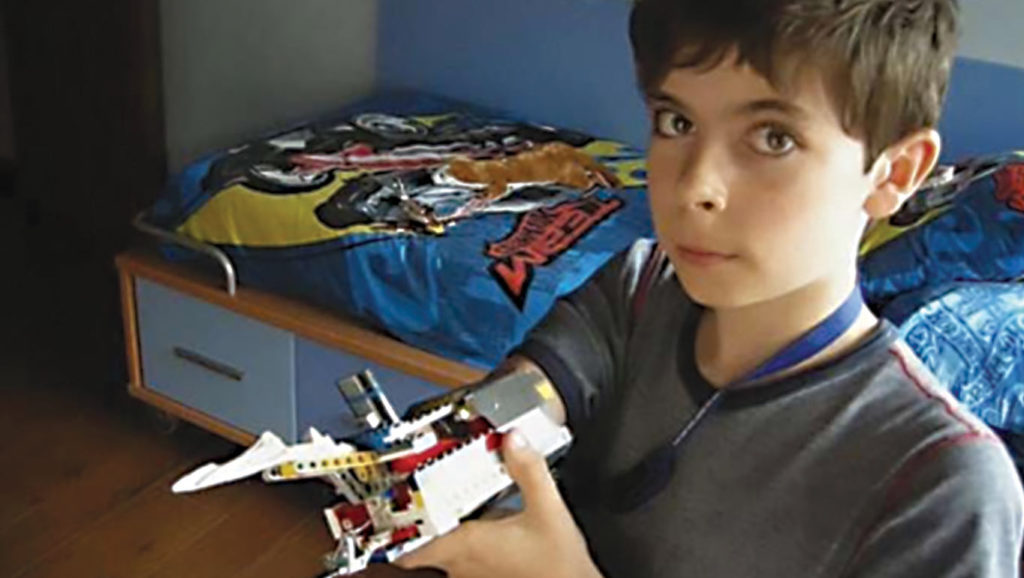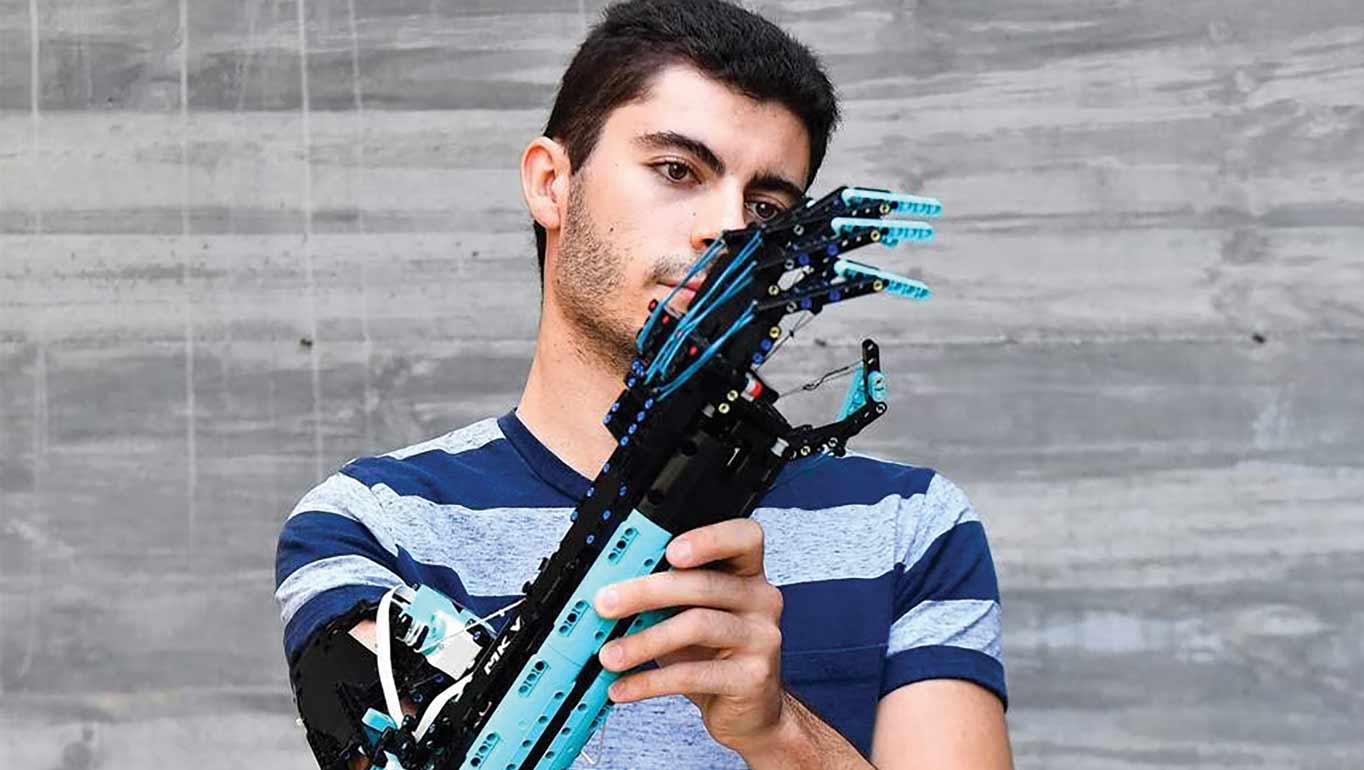David Aguilar Amphoux was born with Poland Syndrome, a congenital disorder that meant his right forearm and pectoral muscles did not fully develop. At the age of nine, David was given his first set of LEGO®. Nine years later, piece by piece, he built himself a fully functioning prosthetic arm using LEGO® TECHNIC. This would be the first of many new projects he would lead as he seeks to improve access to affordable prosthetics for people around the world.
David then went on to study bioengineering at the International University of Catalonia. Today, he is the winner of multiple awards, including a Guinness World Record in 2019, and advocates for a kinder, more inclusive world. His story is one of resilience, creativity, and unwavering determination to transform challenges into opportunities. Below, he explains more about his story, not only as a testament to personal triumph but also as a beacon of encouragement for others.

How has the experience of designing and building your LEGO® prosthetic arm influenced your perspective on innovation and accessibility in prosthetics?
The experience of designing and building LEGO® prosthetics for my physical condition made me realize how difficult it is to replicate the human body, especially with a toy. Innovation and ‘out of the box’ thinking was very much needed because there wasn’t anything like it online that I could use as inspiration. Building around my arm was a hard task. Adapting my square-shaped bricks to the rounded shape of my arm was something that I’ve never done before. But when it was done, my mind exploded with ideas about how to improve the next model or even adapt my systems to orthopedic prosthetics.
Looking forward, what advancements or improvements do you envision in the realm of prosthetics more broadly?
I believe prosthetics need a lot of work in terms of adaptability and comfort. I’ve seen tons of designs with different functions and adaptations but not everyone needs an anatomically correct prosthetic arm. Short stumps are very difficult and painful to adapt so a different kind of prosthetic needs to be designed and manufactured, a similar model to what I designed for Beknur. I believe this is a good opportunity to motivate and inspire prosthetic limb designers to think out of the ordinary.
Can you share the most significant challenge you faced during the development of the prosthetic limbs you have designed, and how you overcame it?
The most challenging task about developing prosthetic arms in LEGO® is adaptation. LEGO® bricks have a specific shape, roundness, and connection points that you need to take into account in every part of the building process. “Which brick can be connected where?” is a constant question you must ask yourself to prevent any harm to your arm or others, to make it as light and structurally stable as possible. Designing multiple prosthetics gave me tons of experience on that question, to the point that I name and imagine every brick that LEGO® has ever produced in their factory. It’s like speaking the brick language!



